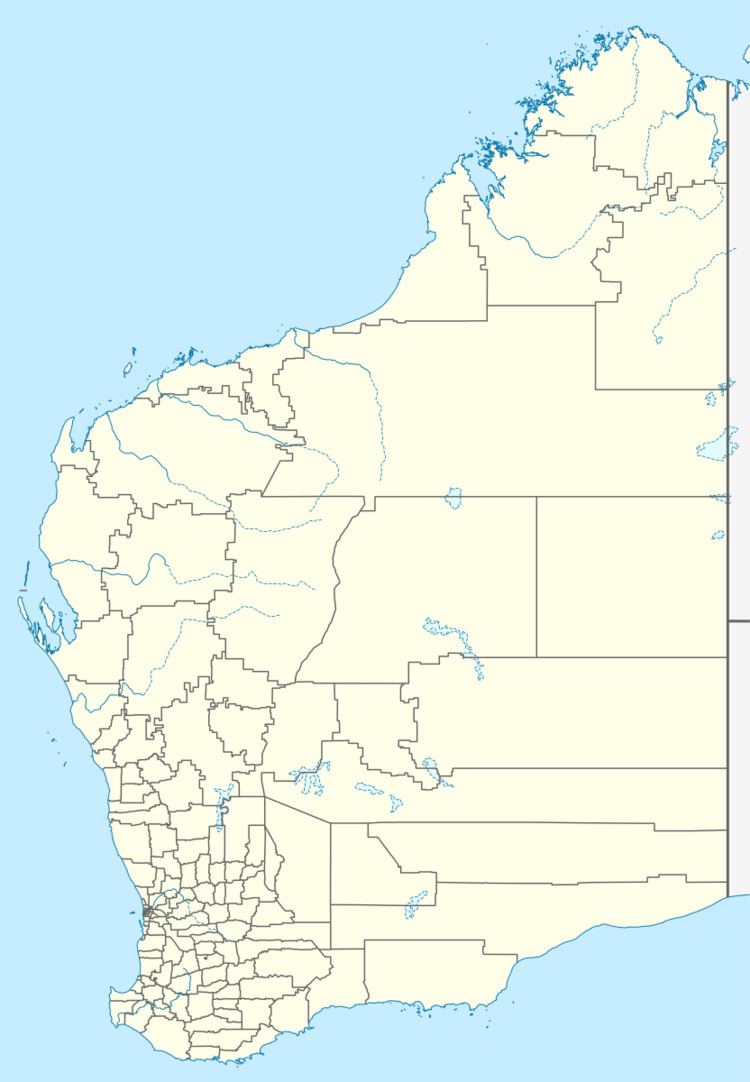Population 149 (2006 census) Postcode(s) 6705 Founded 1897 Local time Saturday 6:52 AM | Established 1897 Elevation 144 m (472 ft) Postal code 6705 | |
 | ||
Weather 21°C, Wind SW at 11 km/h, 93% Humidity | ||
Gascoyne Junction is a small town in the Gascoyne region of Western Australia, inland from Carnarvon on the junction of the Gascoyne River and Lyons River. At the 2006 census, Gascoyne Junction had a population of 149.
Contents
- Map of Gascoyne Junction WA 6705 Australia
- History
- Present day
- Transport and Utilities
- Education
- 2010 floods
- References
Map of Gascoyne Junction WA 6705, Australia
History
The town is named for its position at the junction of the Gascoyne and Lyons Rivers. The Gascoyne River was named by the explorer Lieutenant George Grey in 1839 after his friend, Captain J. Gascoyne (RN).
A police station was built in about 1897, and settlers asked the Government to declare a townsite. By 1909, a general store and other buildings had been erected on private land, and in 1912, the Government finally acceded to the request, naming the town "Killili" after a local Aboriginal word meaning "bullrush" following the Surveyor General's request for a "euphonious native name". For many years, the police station, road board (1912) and hotel were the only buildings in the area, and in 1938, the Roads Board complained about the name, saying that "Gascoyne Junction" and "The Junction" were the names in common use, and asking the Lands Department to "expunge" the name of Killili. The name was changed and gazetted in 1939.
The local road board office, now a heritage-listed site, was used as a meeting place for local associations, and later as the first school in the area (1960–1965) and, since the late 1990s, as a museum. The town's population has been stable since the 1950s.
Present day
Gascoyne Junction is now a centre for mining, pastoral and desert merino fine wool industries, and serves as a gateway to nearby attractions such as Mount Augustus National Park. The town contains the council office, as well as The Junction Hotel, which offers accommodation and pub meals and was originally constructed as the general store (1906). A fuel station, visitor centre and picnic facilities at Federation Park (2001) are also available, and a library at the school is open to the public, while a telecentre is proposed. The Junction Hotel has facilities for Caravans, camper trailers and motorhomes as does a basic caravan park adjacent to the hotel.
Transport and Utilities
Power is supplied by Horizon Power who run a diesel power station in the town. The town supplies its own water from bores, which is treated by the Water Corporation. The Carnarvon–Mullewa Road, which passes through the town, is sealed between Carnarvon and Gascoyne Junction; a ceremony to mark the reconstruction of the last section was held on 20 May 2011. Australia Post services the region with private contractors, who also deliver petroleum and cargo.
Education
A new Remote Community School was opened in 2005 for kindergarten through year 12, with high school and some TAFE classes being provided through School of Isolated and Distance Education. It replaces an earlier school going back to 1960, and its students have historically used the Carnarvon School of the Air program. Many of the students are of Indigenous origin. The nearest TAFE facility is in Carnarvon, and the nearest university courses are offered at Carnarvon High School through Open Universities Australia, and through Pilbara TAFE in Karratha and Port Hedland, which offer some Curtin University courses through the Centre for Regional Education.
2010 floods
Evacuation was required due to the Gascoyne River floods of late December 2010.
